Open For Autumn: Istria the Only Coronavirus Free Region in Europe
October 15, 2020 – Istria the only Coronavirus free region in Europe, is safe to visit this autumn
Travel information provided by Belgian Foreign Affairs authorities currently places the Croatian region of Istria as the most successful in Europe at curbing the spread of Coronavirus. The region stands alone in being coloured green on the Belgian governmental map. As things currently stand, it can confidently be referred to as Istria, the only Coronavirus free region in Europe.
The map is produced by Belgian authorities as a travel guide. Although it currently says Istria the only Coronavirus free region in Europe, the situation could change at any time. The travel advice and map are constantly updated.
The green colour allocation is the highest possible allocation on the map. It means that 'travel is possible - hygiene and social distancing rules still apply.' This is great news for those hoping to visit Istria during autumn.
The autumn season is particularly inviting to many fans of Istrian cuisine as it is the time of year in which fresh truffles can be taken from the county's forests. Anyone planning to this year join the hunt for truffles can now do so confidently as Istria the only Coronavirus free region in Europe.
On 6th October 2020, Total Croatia News's Donatella Pauković wrote about the county's excellent epidemiological situation in an article in which Boris Miletić, mayor of Pula said 'Istria is Again an Example to The Rest of Croatia!'
The head of Istria County's COVID-19 crisis management team, Dino Kozlevac, praised residents of Istria for their widespread respect of suggested hygiene measures. Explaining the county's good epidemiological situation, he said that residents of Istria have been wearing protective masks in closed spaces for three months, and it is those efforts that have created these positive results. While the awarding of the green status does not mean there is zero risk of Coronavirus being currently present in Istria, its lone standing within the continent does mean that Istria is right now the safest place you can travel to in Europe.
Istria was in the world headlines earlier this month when it was voted the world's best olive oil making region in the world, for the sixth year running. Today it may be famous as Istria the only Coronavirus free region in Europe, but it will always hold its title as one of Europe's best areas of gastronomy. As well as olive oil and truffles, Istria is internationally recognised as one of southern Europe's best wine growing regions. Istrian malvasia and teran are famous all over the world.
For the latest travel info, bookmark our main travel info article, which is updated daily.
Read the Croatian Travel Update in your language - now available in 24 languages
Life Expectancy Compared To Average Age Of COVID-19 Fatalities
October 1, 2020 - People in Croatia live for an average of 78 years, and the average age of COVID-19 fatalities is 76 years old
The average age of COVID-19 fatalities or those dying as of consequence of Coronavirus is 76.3 years, according to the latest statistics from the Croatian Institute of Public Health. At the time of writing, a total of 280 Coronavirus-related fatalities have so far been recorded in Croatia.
The average age of COVID-19 fatalities has decreased slightly compared to figures released earlier. At the beginning of May 2020, Croatia's Minister of Health announced that the average age of COVID-19 fatalities was 79.2 years.
Most Coronavirus-related deaths have been recorded in the age group of 80 to 89 years. There have been 81 such deaths since the beginning of the epidemic. In the 70 to 79 age group, 71 people died, in the 90 to 99 age group, 34 people died, and in the 60 to 69 age group, 31 died.
In the age group of 50 to 59 years, 21 deaths occurred, and five deaths were recorded in the age group of 40 to 49 years. There have so far been no Coronavirus-related deaths among those under the age of 40 in Croatia. One person over the age of 100 has died from Coronavirus.
There is currently no accurate data on the average age of COVID-19 fatalities worldwide. The World Health Organization has previously said that of all Coronavirus-related deaths in Europe, more than 80 percent of the deceased had at least one pre-existing chronic disease, such as diabetes, high blood pressure or cardiovascular disease. Extremely serious, life-changing and even fatal cases of Coronavirus have been recorded in the under 40s in other countries.
The figures used in this news item were originally compiled by Index journalists Ilko Ćimić and Davor Tomšić. This news item is a direct translation of their original, which can be found in Index
Neither the author nor Total Croatia News draws any conclusion from this translation, the figures reported, or their comparison.
For the latest travel info, bookmark our main travel info article, which is updated daily.
Read the Croatian Travel Update in your language - now available in 24 languages
Expect Many English Speaking Visitors to Croatia in 2021, says Google
September 25, 2020 - Croatia is the 14th most searched holiday destination in the world for next year. With over 810, 000 searches on Google, the country should expect a big return of English speaking visitors to Croatia in 2021
Aside from the drop in numbers, the country's accessibility and the implementation of epidemiological guidelines, the biggest effect the Coronavirus pandemic had on Croatia's tourist season of 2020 was the change in visitor demographic. The British, Americans, Canadians and Australians largely stayed away. All that looks set to change next year as Google indicates a big return of English speaking visitors to Croatia in 2021.
Over 810, 000 searches have already been made of Croatia as a holiday destination for 2021 on Google, informing that many thousands are already researching or actively planning a trip. Croatia ranked 14th among the most searched for 2021 destinations, trailing slightly behind the likes of Italy, the Maldives, Mexico, Thailand, Spain and Greece.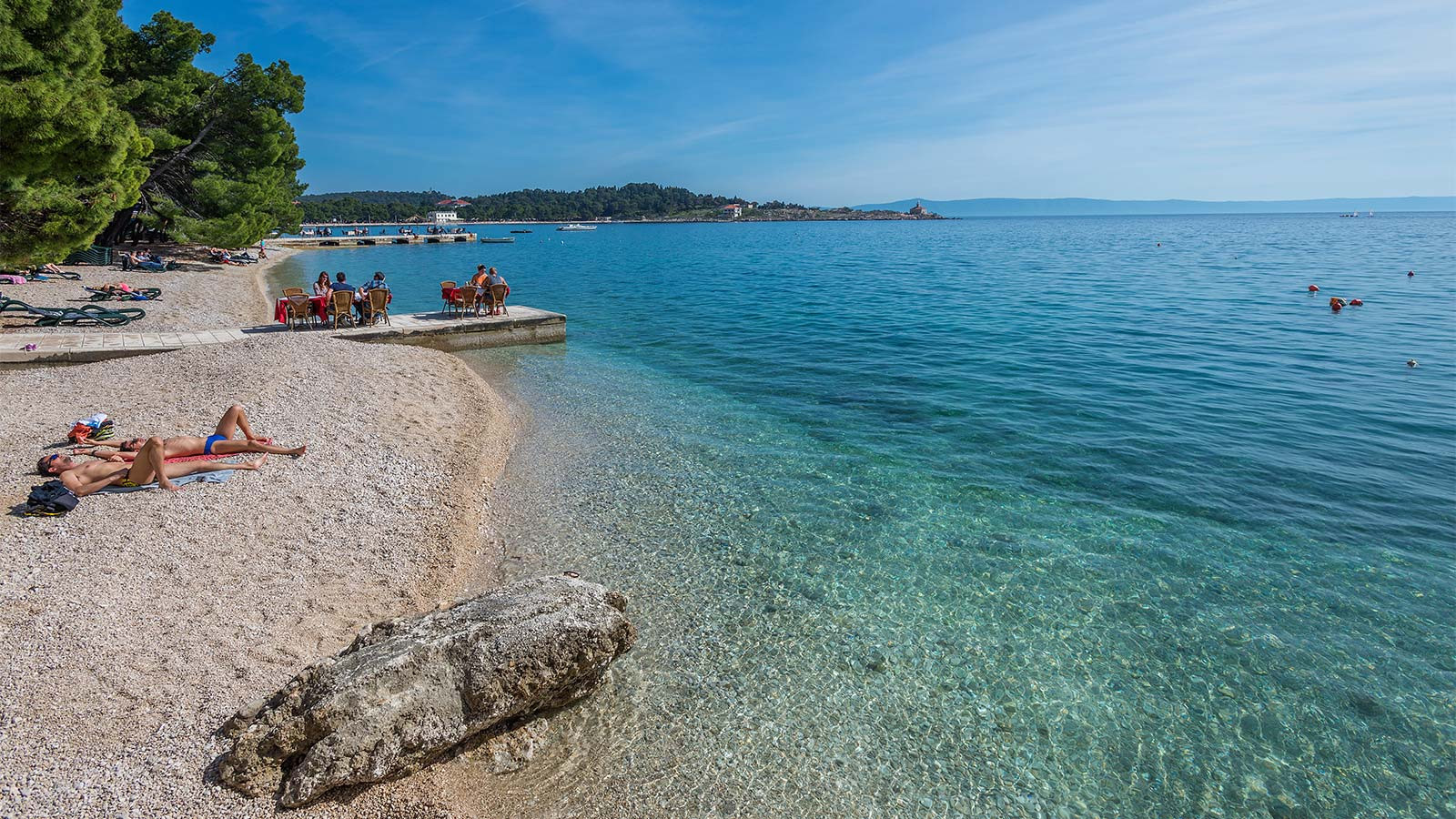 Their language mostly absent from beautiful Adriatic beaches in 2020, English speaking visitors to Croatia in 2021 look set to return © Croatian National Tourist Board
Their language mostly absent from beautiful Adriatic beaches in 2020, English speaking visitors to Croatia in 2021 look set to return © Croatian National Tourist Board
The good news for the return of English speaking visitors to Croatia in 2021 was published by the Electronic System for Travel Authorization (ESTA). The data has been taken from a period starting not before March 2020. This means that all searches took place in full knowledge of the ongoing Coronavirus and epidemiological situation. English speaking visitors are undeterred.
Iva Bahunek, the head of the Croatian Tourist Board in Los Angeles has not had the easiest of tasks since the pandemic began. Her appointment is a relatively recent one. Nevertheless, she has clearly done an excellent job of promoting Croatia as a destination for American tourists in 2021. She confirmed the trends are correct - that US citizens are ready for international travel again - by analysing data from the large American travel insurance company Squaremouth. 65% of all reservations for next year refer to international destinations.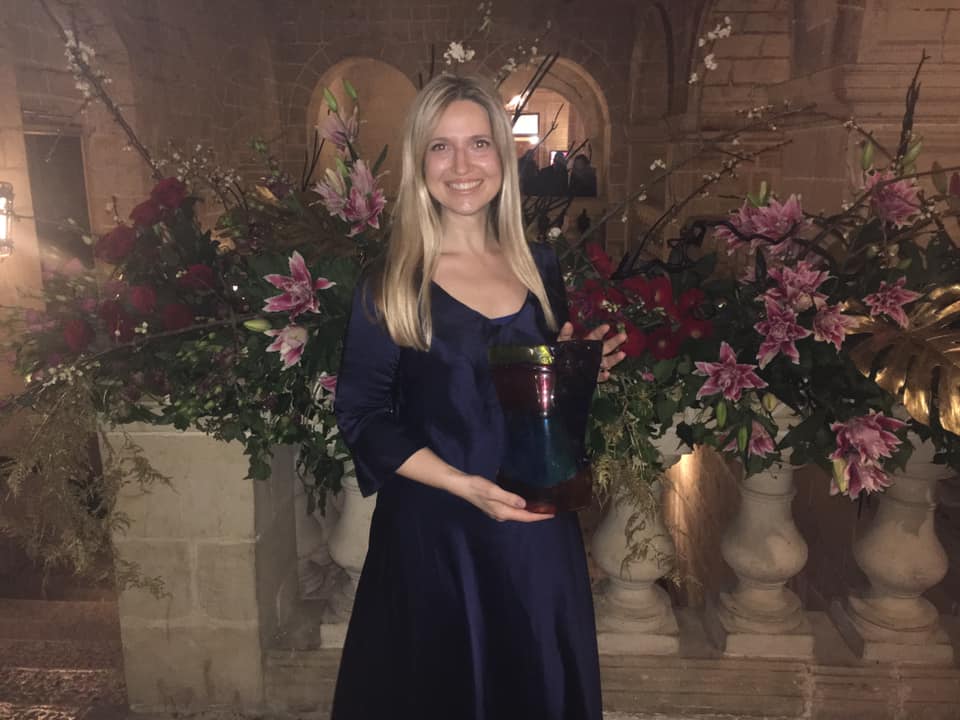 Iva Bahunek accepting her Mediterranean Stars Award for outstanding achievement in promoting Mediterranean tourism, awarded at the 6th Mediterranean Tourism Forum in Malta, 2019. She now heads the Croatian Tourist Board in Los Angeles and analysed data which backs up Google's prediction for a return of English speaking visitors to Croatia in 2021
Iva Bahunek accepting her Mediterranean Stars Award for outstanding achievement in promoting Mediterranean tourism, awarded at the 6th Mediterranean Tourism Forum in Malta, 2019. She now heads the Croatian Tourist Board in Los Angeles and analysed data which backs up Google's prediction for a return of English speaking visitors to Croatia in 2021
Indications from the British market are the same. Total Croatia News recently published an interview with Vedran Meniga, organiser of a music festival site in Sibenik that successfully hosted over 10, 000 festival-goers in summer 2020. Sadly, they were the only ones who braved it. All of the international music festivals that usually take place on the Croatian coast cancelled their 2020 events.
But, some organisers of these festivals have been seen in Croatia over recent weeks, inspecting improvements to the famous The Garden Tisno festival site, which lies at the approach to Murter island. The festival's hugely popular beach stage has had walls removed, its space widened and now looks very well equipped to take on social distancing advice. Music festivals bring tens of thousands of people to Adriatic beaches each summer and the return of the international events will entice English speaking visitors to Croatia in 2021. On the below video you can see Alex Lowes of the Suncebeat Festival and Nick Colgan of The Garden Tisno recently checking out the new layout of the site in preparation for the return of festivals in 2021.
For the latest travel info, bookmark our main travel info article, which is updated daily.
Read the Croatian Travel Update in your language - now available in 24 languages
Over 10, 000 Attend Music Festivals in Sibenik In 2020 - Zero Infections
September 22, 2020 - For six consecutive weeks this summer, the Martinska venue alone welcomed over 10, 000 international visitors to its music festivals in Sibenik. Zero cases of Coronavirus occurred.
Over recent years, three things have firmly placed Croatia on the international stage – Game Of Thrones, the World Cup and music festivals. Running for over a decade now, music festivals are the oldest of these. They have elevated places like Pula and Tisno to become among the most-Googled destinations in the country.
So popular now are Croatia music festivals, that many say the summer season of music festivals in Croatia has supplanted the famous hedonistic holidays of Ibiza as the hippest place to go. Incredible disappointment was therefore felt by tens of thousands of expectant party people earlier this year when most of the international Croatia music festivals decided to cancel their 2020 events. They did so in response to the Coronavirus pandemic.
One venue stood alone – Martinska, a 20-year-old site for music festivals in Sibenik. Over six consecutive weeks, all of their 2020 festivals took place. They did so under strict adherence to epidemiological guidelines. And, following a wait of two weeks after the final event (to cover any potential Coronavirus incubation period), site organisers Pozitivan Ritam have released their results - zero cases of Coronavirus.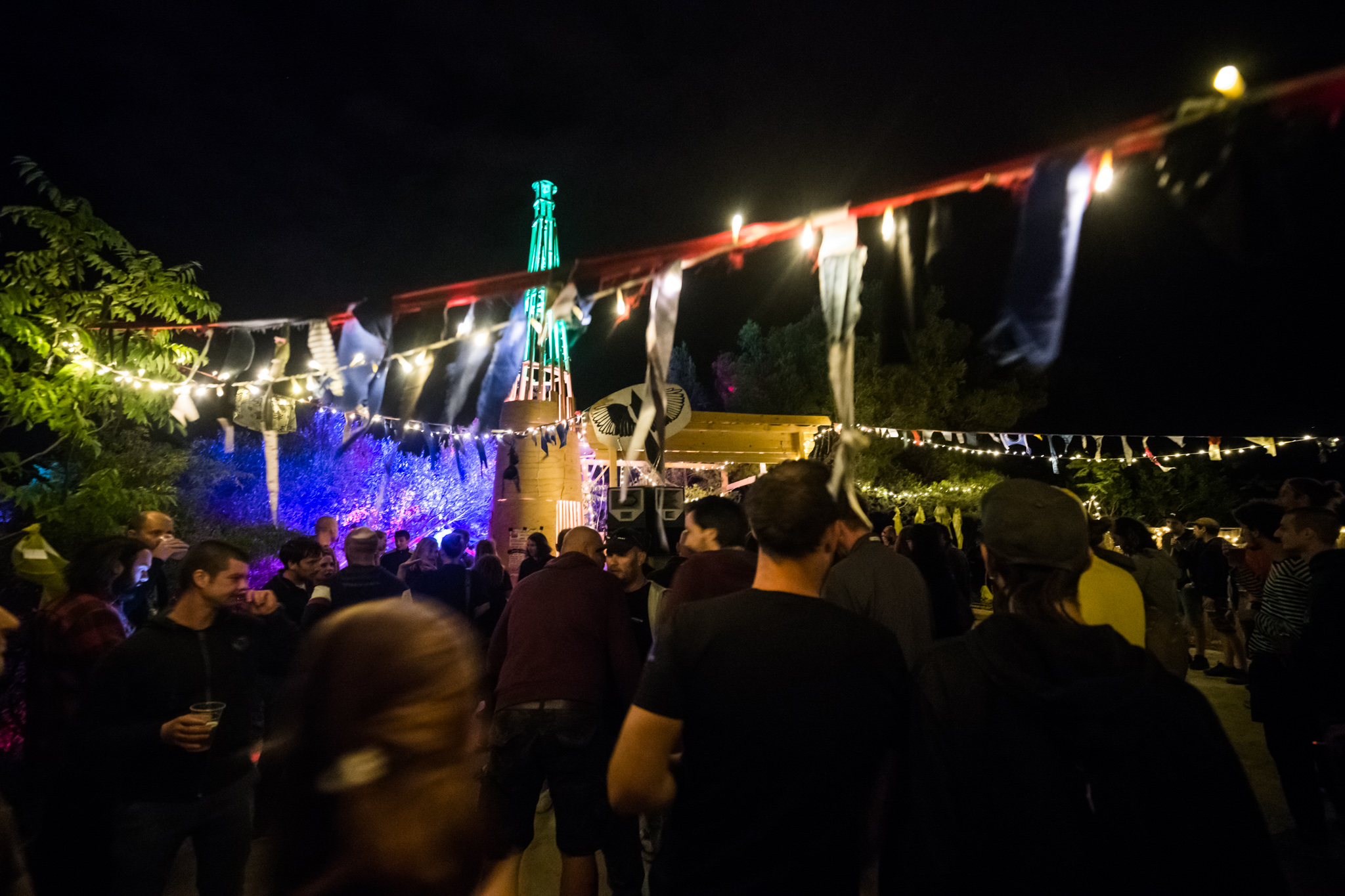
“It's not only the five festivals and one concert event that we did,” Pozitivan Ritam director Vedran Meniga told TCN, “The Fortress of Culture in Sibenik had more than 30 events this summer and Project Vojarna in Sibenik had two parties this year with over 4000 people. On one RTL television show, they described Sibenik as the Croatian Wuhan when 3000 people were in the town for one techno party there. But, at the end of the season, none of these events resulted in a single Coronavirus infection. Not one.”
Following a successful lockdown earlier in the year, cases of Coronavirus were limited in Croatia at the start of the season. Yet, some were understandably hesitant to come. Music festivals in Sibenik still managed to attract visitors from Britain, France, the Netherlands, Belgium and Germany to Martinska. Even after the middle of August when cases began to appear in other regions and international visitor numbers dried up, the festival site was still busy with Croatians and partygoers from near-neighbouring countries. At the end of August, there were no more than five infected persons in Sibenik. None were music festival or music event attendees. Throughout much of the summer, Sibenik recorded zero cases.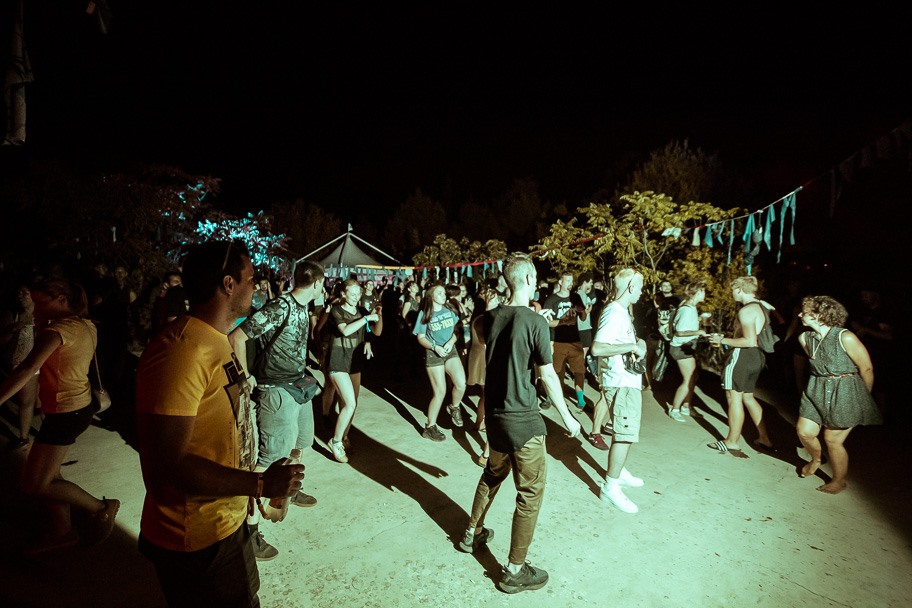
“The music festivals in Sibenik are proof that it's possible to work doing events during the era of Corona,” Meniga tells TCN. “Of course, all of our events were open-air and no doubt that helped.”
"When cases started to reappear elsewhere at the end of July, I went to the civil authorities and epidemiologists immediately, before they came to us,” says Vedran. “The civil authorities and the police grant the license for the events. I presented them with a plan and they were satisfied. They allowed us to continue.”
“It helped that Martinska is across the bay from Sibenik. Festival attendees don't even need to go into the town to come, they drive here straight from the Magistrala (Croatian coastal highway). Also, Martinska's capacity is five times bigger than the numbers we were going to cater for. The site can accommodate six to seven thousand. We expected no more than 1500 daily. That was more than enough space to maintain physical distance. We carefully took all contact details for each attendee at the entrance, in case something appeared and we (or authorities) had to later contact people. We also took everyone's temperature. And in addition to the required epidemiological sanitization, we also installed disinfectant pillars at every single point where money or goods exchanged hands. All our staff wore not only masks but also gloves. Four times the civil authorities made surprise visits to the site for inspection along with epidemiologists and police. Each time they were completely satisfied.”
Current forecasts for the Coronavirus response predict that a vaccine will not be available to cover everyone until the autumn of 2021. This has serious implications for at least one more tourist season. Yet, with the incredible achievements seen this summer at Martinska's music festivals in Sibenik, we can all take hope that events, tourism, and even life itself may continue to be enjoyed in the near future, as long as we're all smart about it.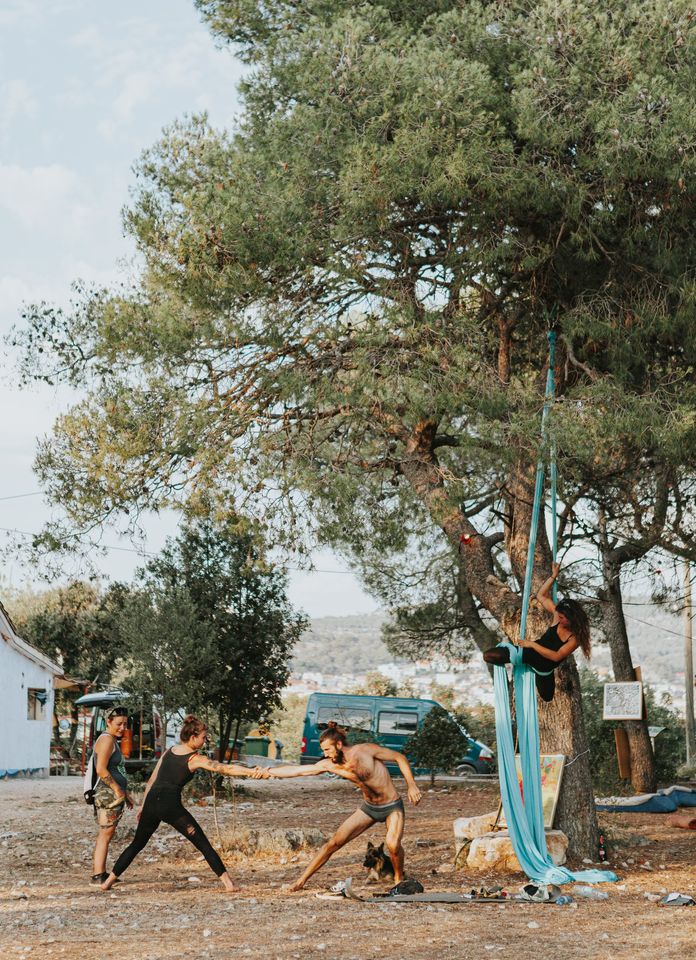
All photos 2020 Martinska © Seasplash / Pozitivan Ritam.
For the latest travel info, bookmark our main travel info article, which is updated daily.
Read the Croatian Travel Update in your language - now available in 24 languages
Luxury Hotel Rooms in Dubrovnik for 50 Euros in October? Let's Go!
Friday 11 September 2020 - As part of the national campaign Tjedan Odmora Vrijedan (Holiday-worthy week) there will be Luxury Hotel Rooms in Dubrovnik for 50 Euros in October. We're signed up! But will others follow?
Luxury Hotel Rooms in Dubrovnik for 50 Euros in October? Idemo (let's go)! In an interview given to dnevnik.hr, assistant mayor of Dubrovnik Jelka Tepšić has confirmed that many businesses in and around Dubrovnik are prepared to sign up to the national Tjedan Odmora Vrijedan (Holiday-worthy week) initiative.
The campaign, conceived by the Croatian Ministry of Tourism, has set aside a week – well, actually just over – in which they are encouraging all within the tourism sector to offer a 50% discount. Covering two weekends, from Friday 16 October to Sunday 25th October, the offer should see some luxury hotel rooms, fabulous meals, and transport carriers offering premium products at half the price. If they sign up.
Luxury hotel rooms in Dubrovnik for 50 Euros in October sounds like a good deal. And it is. During a typical October, visitors are still enjoying the sunny streets of the Old City in Dubrovnik. A luxury hotel at that time would usually cost €200 per night. Because of this year's extraordinary circumstances, those rates are currently €113 per night. Dnevnik.hr, therefore, estimates luxury hotel rooms in Dubrovnik for 50 Euros in October.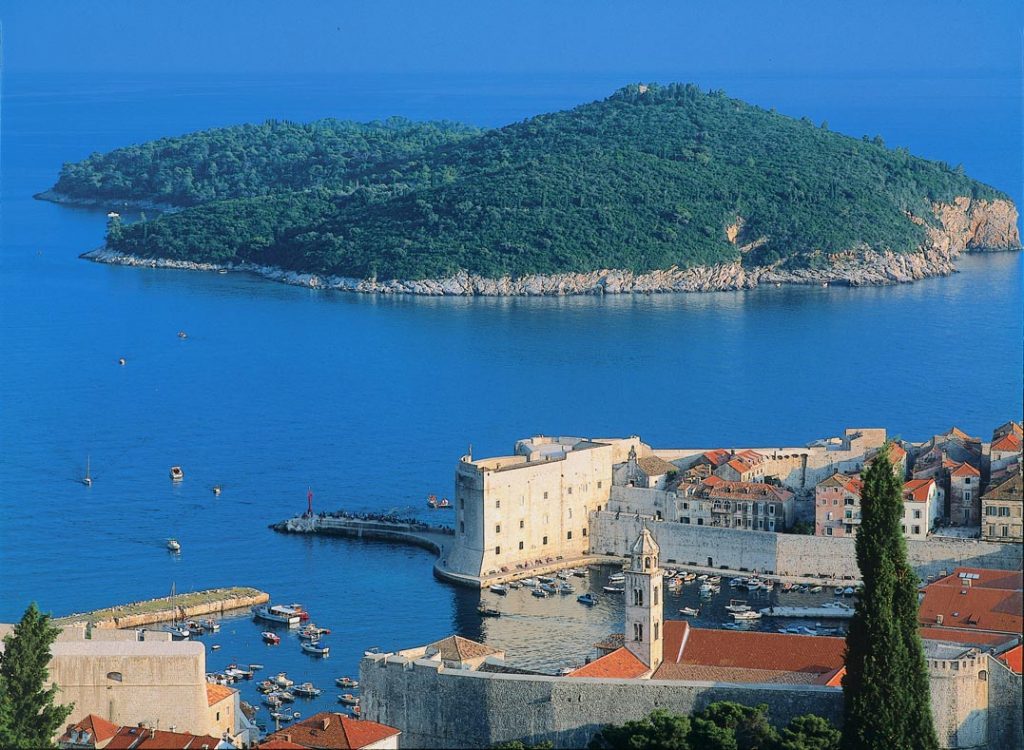
View of the islet Lokrum from Dubrovnik © visitdubrovnik.hr
Dubrovnik is a special case within Croatian tourism. In recent years it has benefitted from its ability to extend its season beyond that which other Croatian destinations can. This is due to its world-famous attributes and excellent marketing. However, being a city linked mostly by charter flights and large cruise ships, it has suffered greater this year than destinations traditionally visited by road users. It's understandable that they would want to optimistically join the initiative.
Some in the tourism sector seem less keen on the initiative. They regard October as too late in the season for such a scheme. Their pessimism may be justified. It has been a much more difficult month to promote for places other than the special case of Dubrovnik – the sea is beginning to see a drop in temperature and in continental regions, the early mornings and evenings in October may necessitate a hoodie and long pants.
But, that's not to say that such destinations couldn't benefit from attracting, in particular, domestic visitors during the initiative week. That is if such homegrown tourists have any holidays remaining. Only time will tell just how widespread the industry will embrace the initiative, and just how beneficial it will be.
For the latest travel info, bookmark our main travel info article, which is updated daily.
Read the Croatian Travel Update in your language - now available in 24 languages
COVID-19 in Croatia: Civil Protection Weighs In on Lockdown Potential, Local Measures
August 25, 2020 - Croatia has recorded an increased number of coronavirus infections in the last ten days. However, on Monday, 136 new cases were detected, which is significantly less than in the past few days. The latest on COVID-19 in Croatia.
Index.hr reports that the National Civil Protection Headquarters, along with several scientists, believes that in the autumn, the symptoms will be significantly more severe compared to the symptoms in those infected this summer. In this context, new measures are being prepared, and the leaders of the National Headquarters have repeatedly described what the rules should look like in autumn.
In short and most importantly, there should be no new lockdown. Not all cafes, schools, restaurants, shops should be closed, like in the spring. There should be no passes, bans on leaving the place of residence, or most of what we have witnessed already. However, as Bozinovic emphasized, strict national measures are not completely ruled out, and everything will depend on the situation.
The measures to be adopted should be local. Although a ban on cafe work is currently in force throughout the country, no matter how many people are infected in each area, the Headquarters says that measures at the national level should be an exception.
What it should look like in the future, Bozinovic explained at Monday's 2 pm conference.
"We emphasized that the system will make every effort to avoid closures, to keep it active as much as possible, and for local and county headquarters to detect hotspots more accurately. This would mean that National Headquarters' decisions would not affect the same activities throughout Croatia, but would be aimed at a segment or a specific legal entity where measures of the Croatian Institute of Public Health are not applied as prescribed," said Bozinovic.
He explained that this means the more precise extinguishing of hotspots, which will give local headquarters more work, and expressed the expectation that some local headquarters will soon come up with concrete measures.
"If we see that the majority has similar requirements, a measure can be adopted that will be valid for the entire territory of Croatia. This is the best way to leave as much as possible to function, and to deal with emerging hotspots at 14-day intervals," Bozinovic said.
Bozinovic emphasized that the meeting with the local headquarters aimed to encourage them to give the National HQ more information so that it could react.
"We deeply believe that we will not enter another lockdown, and we need to report in time for the hotspots so that we do not have to take decisions beyond what is necessary and possible at a given moment," he said.
Speaking about the hotspots, Bozinovic said that weddings spread the virus, but should not be generalized. "There are 300 or so weddings a week in Croatia and not all of them are a source of infection. They will react where something appears, try to fix it, and where we have a favorable situation, let life go as normally as possible," he said.
Bozinovic was also a guest on HRT, where he explained everything a little more. He says that local measures are nothing new, and they were adopted, for example, on Brac and Murter. One such measure is now in force in Imotski.
"This is nothing new, such measures have been so far, but there have been fewer. At the initiative of local, county headquarters, we have always responded, knowing that people in the field have a better insight into the situation and the potential hotspots because from the national level, you can't have such an insight, " Bozinovic told HRT.
Bozinovic admits that national measures have major shortcomings.
"On the other hand, the fact is that when decisions are made at the national level, they are applied indiscriminately to all activities. This was justified during the lockdown, and horizontal measures were taken. However, we now know more about the virus and how it can be can be significantly reduced by responsible behavior.
Given that there is no more lockdown, that there is no intention to close everything, that there is not even a need if the measures are applied, then we will, and we have already announced this, rely on this data from the field.
If local headquarters, which are not only the county but also city and municipal, report that something is happening in certain facilities and activities, we will quickly make decisions that will be applied. That means a lot of decisions. However, it is better to make a lot of decisions that are more precise than one that can hit indiscriminately," says Bozinovic.
Large gatherings and nightclubs are often a source of infection. Bozinovic was asked whether some measures will be adopted at the Croatian level.
“It is not our intention, nor would it be proportionate to make a decision that would hit someone who has been adhering to HZJZ measures all along,” he says.
Bozinovic says the National Headquarters cannot monitor all these gatherings at the local level.
"That is why the responsibility lies with the local headquarters, because they all, especially the county headquarters, have the task of including epidemiologists who know the job, as well as those who are in the National Headquarters," he said.
Bozinovic was asked what if there are 500 newly infected people a day.
"As long as it is possible, and I hope it will always be possible, these measures will be adopted locally, regionally. But we do not exclude national measures either. It is difficult to predict now. I am sure that if everyone engages to the maximum, we will achieve results," said Bozinovic.
The director of the Croatian Institute of Public Health, Krunoslav Capak, was a guest on RTL Danas. He also commented on this new approach, which will be based on stronger localization of measures.
Asked if he had confidence that the local headquarters would make recommendations validly and promptly, Capak replied that the goal of the meeting and agreement with local headquarters was to lower the level of "snapshots of epidemiological assessments to the local level".
"We believe that those who are on the spot can best identify the problem and the source of the infection and best direct a certain measure to reduce that source of infection and solve the problems. When we have information from local headquarters about it, then the National Headquarters can take more targeted measures. So far, when we have adopted horizontal measures that apply to all counties, there is always the possibility that for someone, this measure may be too strict or they do not need it," he said, adding that the situation is always better somewhere and worse elsewhere.
"This way, we will now have the opportunity to focus on measures where the problem exists and try to solve the problem at its source. Local headquarters always have a member of the epidemiologist," Capak said.
To the additional question that the local headquarters had epidemiologists so far and whether the meeting took place too late, Capak answered that they had communicated with them in the same way so far.
"However, we have now clearly presented this possibility of working to apply the principle of subsidiarity, record the problem and direct the measures where they are most needed," Capak said, adding that the National Headquarters has supported the proposed measures of the local headquarters. He reminded of the cases of Vukovar-Srijem County and weddings or quarantine on Murter, where they obeyed local headquarters in the past.
Asked again if everything could have been done earlier, Capak replied: "We have always reacted by supporting the local headquarters. I think it is not too late. But now we have presented this possibility to all headquarters, that it exists, and that we will we certainly support when they spot a problem and give us suggestions."
Minister Vili Beros also commented on this new approach for Dnevnik N1 television. He says there will be no such closure because the economy could not stand it.
"Measures used to be general and focused on the entire territory of the country, but we have already announced that the measures will be regional and focused on hotspots. That is why we emphasized the role of local and county headquarters, because they know the situation in their areas best and give a framework, but they should detect problems locally and emphasize to us those issues that will fit into the measures," said Beros.
"There were many unknowns in the first part of the battle, but now we know the clinical picture, a number of elements are better known than before. Such closure is not even possible, and the economy would not tolerate it. By selective measures and finding ways to coexist in the second, we will learn to live with that virus as part of the fight," Beros said.
When asked how he evaluates the work of local headquarters, he says that some worked more, some less.
"At the meeting, we emphasized the role of county headquarters. And in Murter, Brac, Istria ... Initiatives were brought at the suggestion of local headquarters. I would not criticize anyone, and we should work in the field and talk to everyone. Communication should be permanent, and the information should be accurate. Some headquarters were more active, some less so, but everyone's task is to prevent the spread of the epidemic and that is why today we have confirmed this once again and consider measures together," the minister said.
Asked if he expects a drop in the number of newly infected, he says he expects it in a week or two, if there are no new epidemiological hotspots because they want to bring the situation under control by the autumn.
"We are currently controlling the epidemiological situation, and our epidemiologists believe that the measures adopted 10 days ago will now show the result and the picture. It is still possible that the number of infected will fluctuate, but that number should start falling. Our goal is to stabilize the epidemiological situation before the school year," said Beros.
For the latest travel info, bookmark our main travel info article, which is updated daily.
Read the Croatian Travel Update in your language - now available in 24 languages
VIDEO: Young Italians Go Wild On Pag: “There Is No More Coronavirus!”
August 16, 2020 - Italian TV reports shocking disregard for social distancing as young Italians go wild on Pag
Italian TV have aired shocking footage showing their young countrymen on holiday. The report, aired on the TG1 segment of Rai Uno TV shows hundreds of island holidaymakers packed into nightclubs as young Italians go wild on Pag. They display a wanton disregard for any social distancing.
One young Italian lady is interviewed and claims there is no more Coronavirus. Another, a male, says he'll get tested upon returning home, although he's not worried because he is young. Perhaps his elderly relatives should be more worried?
Young italians go wild on Pag
After a slow start to the season, scenes from the report appear to show the famous nightlife of Pag now in full swing. With so many holidaymakers from Italy currently enjoying the island, its clubs and the alcohol they serve, it appears it would be a struggle for the venues themselves to enforce social distancing regulations. But, the holidaymakers do not appear keen to take on the responsibility for themselves.
While it makes a change for judgemental TV reports from the Croatian holiday season for once not to feature British youths, this is hardly a matter for amusement; Italy was one of the first European countries hit hard by COVID-19. It took a sustained and painful effort to bring the number of infections down. Italians at home must be watching such scenes with horror. They are terrified of the virus re-emerging at the uncontrollable level seen earlier this year. Already 30 young people who had been on holiday in Croatia this year returned home with Coronavirus infections.
For the latest travel info, bookmark our main travel info article, which is updated daily.
Read the Croatian Travel Update in your language - now available in 24 languages!
COVID-19 in Croatia: Bars and Clubs to Close at Midnight
August 13, 2020 - Croatia recorded 180 new cases on Thursday, by far the most in the country since the beginning of the coronavirus epidemic. The director of the Croatian Institute of Public Health, Krunoslav Capak, commented on the situation and announced new measures for COVID-19 in Croatia.
"We have to keep in mind the fact that we have given in to all social and economic activities and we have given in to tourism and we are very successful in that. We have more than 800,000 people on the coast and we expected an increase. This is a higher number and, of course, we are concerned, but we hope that with our new measures, we will be able to suppress that figure and reduce it to an acceptable level," Capak said, as reported by Index.hr.
In a statement for Nova TV, he revealed that a new measure would come into force on Friday - restricting the work of clubs and cafes. Thus, bars and clubs will work until midnight.
"Yesterday we announced that the epidemiological service with the sanitary inspection could temporarily close clubs. Today, the Headquarters decided that will take effect tomorrow, and limiting the working hours of nightclubs, bars, and cafes will be valid for the next 10 days," Capak explained, and added that clubs will not be able to work after midnight.
"I have to point out a few related facts about these 180 newly infected. It is an even younger age group than yesterday, averaging 31 years. Most of them can be connected with gatherings on the Adriatic coast," Capak said. He added that the competent inspections would continue to control the work of caterers.
"As far as Slovenia is concerned, we are not on the red list. We spoke today with those responsible for the epidemiological situation in Slovenia," revealed Krunoslav Capak.
So far, counting today, Croatia has had more than 100 new infections in one day seven times. To date, the record day was July 11, with 140 newly infected, yesterday was the second-highest in terms of the number of newly infected - 130, and on July 15, there were 126.
Croatia first recorded more than 100 new cases on July 10. There were 116 newly infected at the time. The same number was recorded on July 18.
Now, for the seventh time, Croatia recorded over 100 newly infected people in one day - as many as 180 - and this is the worst day since the beginning of the epidemic in Croatia.
For the latest travel info, bookmark our main travel info article, which is updated daily.
Read the Croatian Travel Update in your language - now available in 24 languages!
Join the Total Croatia Travel INFO Viber community.
To read more about coronavirus news in Croatia, follow TCN's dedicated page.


